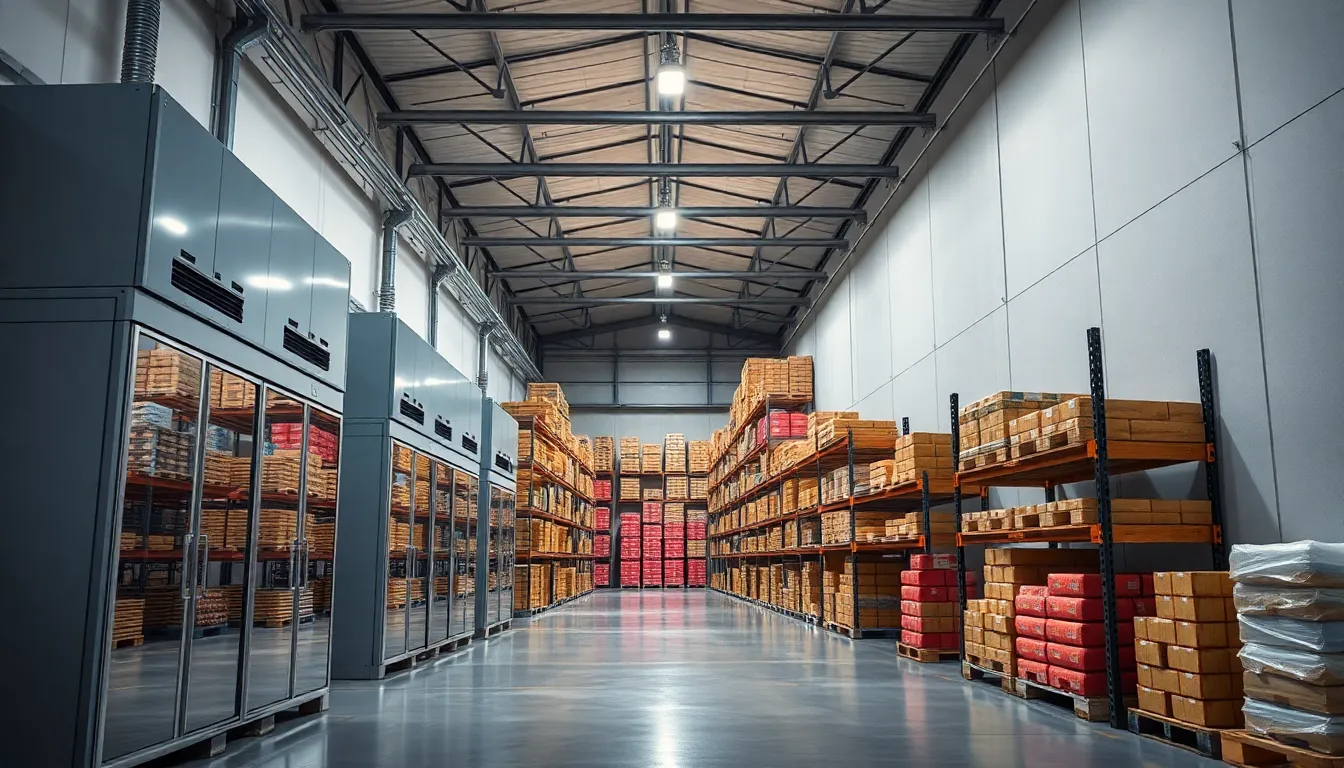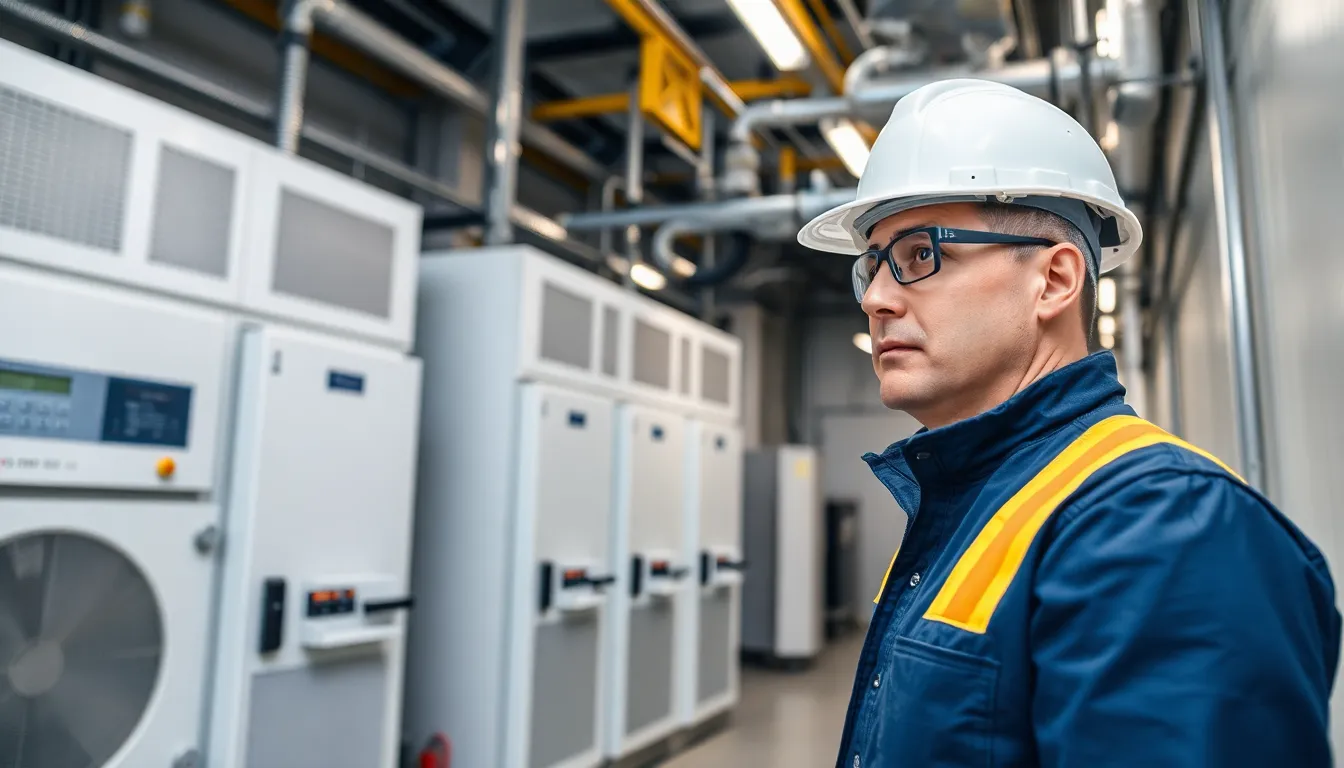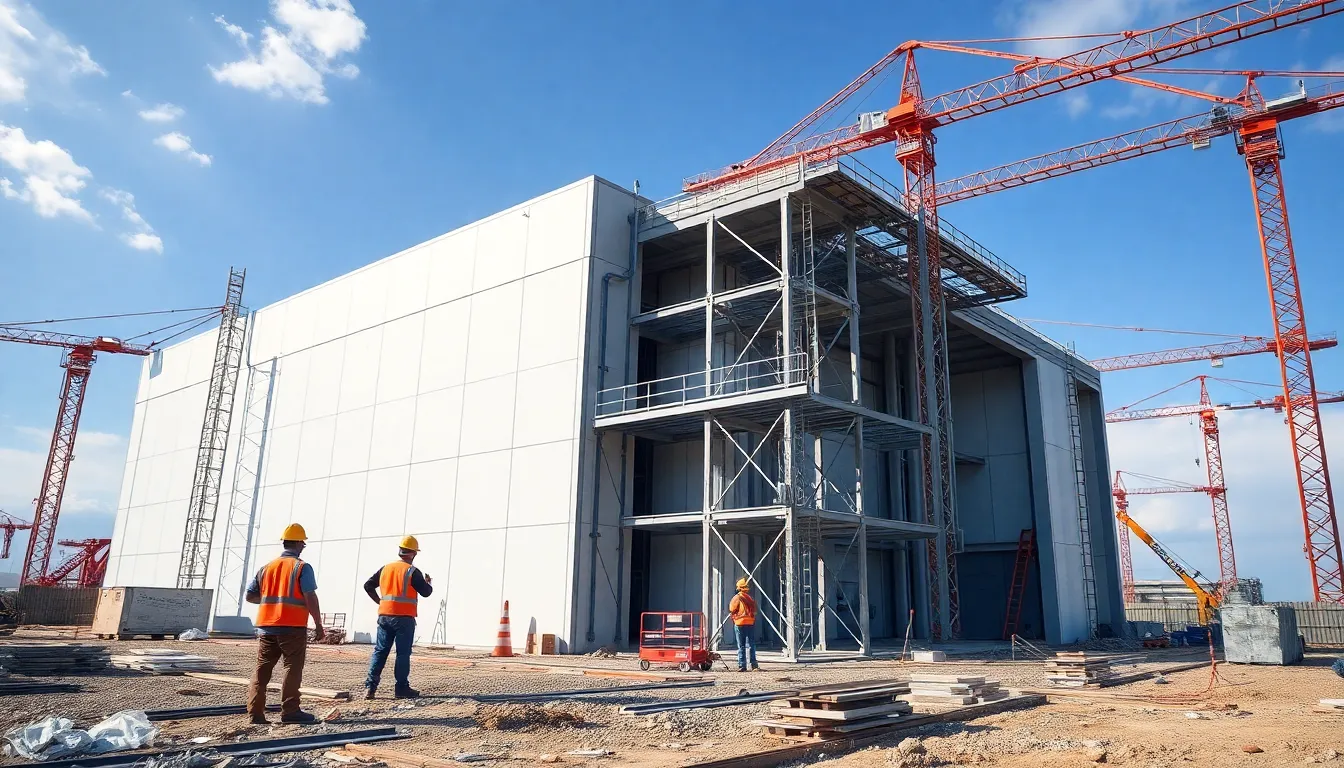Table of Contents
ToggleIn a world where fresh produce can turn into a science experiment overnight, cold storage buildings are the unsung heroes of the food industry. They’re like the superheroes of preservation, keeping our favorite snacks crisp and our meats from throwing a party with bacteria. But building these chilly fortresses isn’t just about slapping up some walls and cranking up the AC; it’s a delicate dance of engineering, planning, and a sprinkle of magic.
Overview of Cold Storage Building Construction
Cold storage building construction plays a vital role in various industries, especially in food and pharmaceuticals. Engineers design these facilities to maintain specific temperature ranges, ensuring products remain fresh. The construction process requires specialized materials, insulated panels, and advanced refrigeration systems.
High-quality insulation minimizes energy loss, which reduces operational costs. Temperature monitoring systems ensure that conditions remain stable. These systems trigger alarms if temperature deviations occur, providing an additional layer of security for the stored goods.
Site selection impacts logistics and accessibility. A well-placed cold storage facility enhances distribution efficiencies, reducing transit times. Proximity to major transportation routes allows for quicker delivery of perishable items.
Building codes and regulations must be strictly followed. Understanding local guidelines ensures compliance with safety and health standards. Collaboration with authorities can simplify the permitting process, reducing delays.
Energy efficiency emerges as a top priority in modern construction. Incorporating renewable energy solutions like solar panels can further reduce operational expenses. Innovative designs that utilize natural light minimize reliance on artificial lighting.
Maintenance planning is essential for long-term serviceability. Scheduled inspections and regular upkeep prolong the lifespan of refrigeration equipment. Proper planning prevents costly downtime, safeguarding the integrity of stored products.
Training staff on operational procedures and safety protocols is crucial. Knowledgeable personnel can respond effectively to emergencies, preserving facilities and inventory. Dedicated training enhances overall efficiency while ensuring compliance with regulatory requirements.
Key Considerations in Designing Cold Storage Facilities


Designing cold storage facilities requires careful attention to several critical factors. Temperature regulation and insulation play crucial roles in ensuring product safety and operational efficiency.
Temperature Control Systems
Temperature control systems form the backbone of cold storage facilities. These systems maintain specific temperature ranges, essential for preserving the integrity of food and pharmaceuticals. A combination of advanced refrigeration units and sensors ensures consistent temperatures are maintained. Integrated monitoring systems automatically alert staff to any temperature fluctuations, minimizing spoilage risk. Regular maintenance of these systems enhances their longevity and reliability. Automation of temperature adjustments further increases efficiency, reducing energy costs while ensuring compliance with safety standards.
Insulation Techniques
Insulation techniques significantly impact energy efficiency and temperature stability in cold storage facilities. Engineers often select insulated panels for walls, ceilings, and floors to minimize heat transfer. These panels help maintain consistent internal temperatures, reducing the workload on cooling systems. Spray foam and rigid foam are common insulation materials, chosen for their exceptional thermal performance and moisture resistance. Air sealing around doors and windows prevents unwanted warm air infiltration. Investing in high-performance insulation not only lowers energy expenses but also extends the lifespan of refrigeration equipment.
Materials Used in Cold Storage Building Construction
Cold storage facilities rely on specific materials to achieve efficiency and effectiveness. These materials play a critical role in maintaining the desired internal climate and ensuring structural integrity.
Structural Components
Steel and concrete serve as primary structural components. Both materials provide strength and durability, essential for supporting heavy insulation panels and refrigeration equipment. Insulated walls use composite panels filled with polyurethane or polystyrene, which minimize thermal bridging and energy loss. Roofing options often include metal or concrete to enhance durability and weather resistance. Flooring materials, typically reinforced concrete or specialized resin systems, must withstand heavy traffic from forklifts and pallets. High-quality sealing around openings ensures minimal air leakage, further improving energy efficiency.
Refrigeration Systems
Refrigeration systems in cold storage facilities operate based on specific engineering requirements. Direct expansion systems or central chiller systems provide refrigeration throughout the space. Ammonia and Freon are common refrigerants, selected for their cooling efficiency and environmental suitability. Advanced monitoring systems, integrated with alarms, help staff track temperature and humidity levels. Variable speed drives often optimize compressor operations for energy savings. Maintenance-friendly designs allow efficient access to components, which ensures the longevity of the systems.
Best Practices for Cold Storage Building Construction
Prioritizing energy efficiency in cold storage buildings plays a crucial role in reducing operational costs. Engineers recommend incorporating renewable energy solutions, such as solar panels, to enhance sustainability. Maximizing natural light is also beneficial for lighting spaces effectively without relying solely on artificial sources.
Choosing the right insulation techniques significantly impacts temperature stability. Insulated panels crafted from materials like polyurethane provide excellent thermal performance and moisture resistance. Additionally, proper air sealing around doors and windows is vital to prevent warm air infiltration.
Using appropriate materials contributes to the structural integrity of cold storage facilities. Steel and concrete serve as reliable options for strength and durability. Composite panels, filled with polystyrene, help minimize thermal bridging in insulated walls, while specific roofing materials enhance weather resistance.
Monitoring temperature and humidity in these facilities is essential for safe operation. Advanced refrigeration systems, including direct expansion or central chiller setups, utilize refrigerants such as ammonia and Freon to maintain ideal conditions. Implementing variable speed drives optimizes compressor performance, achieving energy savings while responding to fluctuating demands.
Regular maintenance planning ensures the longevity of refrigeration equipment. Access points designed into the system allow for easy component servicing, reducing downtime. Training staff on operational procedures and safety protocols is necessary for effective emergency responses and regulatory compliance.
Strategic site selection aids in distribution efficiency. A well-located cold storage building shortens transit times, enhancing overall logistics. Collaborating with local authorities during the permitting process streamlines compliance with building codes and health standards.







